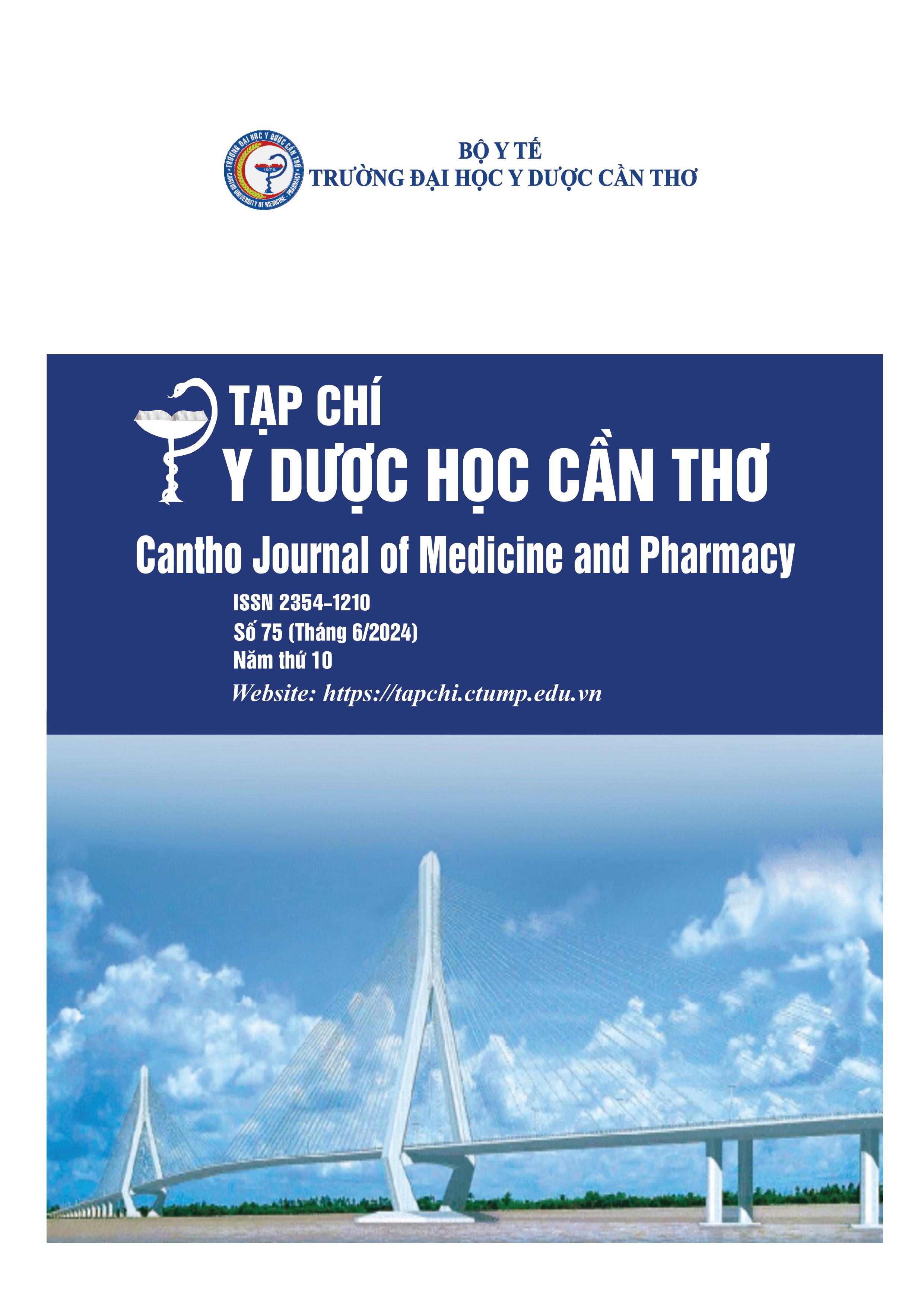ASSESSMENT OF BLEEDING RISK BY ARC – HBR CRITERIA IN PATIENTS PRESENTING WITH ACUTE MYOCARDIAL INFARCTION RECEIVED PERCUTANEOUS CORONARY INTERVENTION AT CAN THO CENTRAL GENERAL HOSPITAL IN 2022-2023
Main Article Content
Abstract
Background: Acute myocardial infarction (AMI) becomes the big burden disease of society with high morbidity and mortality. Recently, Percutaneous Coronary Intervention (PCI) is the effiency method for patients with AMI, besides, PCI has some dangerous complications, especially, the bleeding events after PCI. ARC – HBR criteria have been proposed as a standardized tool for assessing bleeding risk in patients undergoing PCI, in 2020 ESC Guidelines for the management of acute coronary syndromes in patients presenting without persistent ST-segment elevation. Objective: To assess the bleeding risk ‘s AMI patients undergoing PCI by ARC – HBR criteria. Materials and methods: Case series study on 89 AMI patients undergoing PCI at Can Tho Central General Hospital. Results: The ablility of assess bleeding risk in AMI patients undergoing PCI of ARC – HBR criteria was shown to be good with AUC = 0.841 (CI 95%: 0.732 – 0.951). Patients were considered to be at HBR if at least one major criterion or two minor ARC – HBR criteria were met, with a sensitivity 91.7% and specificity 76.6%. Conclusion: The ablility of assess bleeding outcomes in AMI patients undergoing PCI of ARC – HBR criteria was shown to be good, with high sensitivity and specificity. Patients met more and more ARC – HBR criteria, the bleeding outcomes increased.
Article Details
Keywords
Bleeding, ARC – HBR criteria, ablility of predicting bleeding outcome, acute myocardial infarction
References
2. Bộ Y Tế. Thực hành chẩn đoán và điều trị bệnh động mạch vành. Quyết định số 5332/QĐ-BYT, 2020. Nhà xuất bản Y học Hà Nội.
3. Chhatriwalla AK, Amin AP, Kennedy KF, et al. Association between bleeding events and inhospital mortality after percutaneous coronary intervention. JAMA. 2013. 309(10), 1022-1029. doi:10.1001/ jama.2013.1556.
4. M. Nakamura, et al. High bleeding risk and clinical outcomes in East Asian patients undergoing percutaneous coronary intervention: the PENDULUM registry. EuroIntervention. 2021. 16(14), 1154-1162, doi: 10.4244/EIJ-D-20-00345.
5. Urban P, Mehran R, Colleran R, et al. Defining high bleeding risk in patients undergoing percutaneous coronary intervention: a consensus document from the Academic Research Consortium for High Bleeding Risk. Eur Heart J. 2019. 40(31), 2632-2653, doi:10.1093/eurheartj/ehz372.
6. Yasushi Ueki. Validation of Bleeding Risk Criteria (ARCHBR) in Patients Undergoing Percutaneous Coronary Intervention and Comparison with Contemporary Bleeding Risk Scores. EuroIntervention. 2020. 16(5), doi: 10.4244/EIJ-D-20-00052.
7. 2020 ESC Guidelines for the management of acute coronary syndromes in patients presenting without persistent ST-segment elevation. Eur Heart J. 2021 Apr 7;42(14):1289-1367. doi: 10.1093/eurheartj/ehaa575.
8. Thân Đức Tài Nhân. Đánh giá nguy cơ chảy máu theo thang điểm ARC – HBR ở bệnh nhân ACS được can thiệp động mạch vành qua da. Đại học Y Hà Nội. 2021. 69.
9. Choi SY, Kim MH, Lee KM, et al. Comparison of Performance between ARC-HBR Criteria and PRECISE-DAPT Score in Patients Undergoing Percutaneous Coronary Intervention. J Clin Med. 2021; 10(12):2566. doi:10.3390/jcm10122566.
10. Sia C-H. Association between smoking status and outcomes in myocardial infarction patients undergoing percutaneous coronary intervention. Sci rep. 2021;1(11). doi: 10.1038/s41598-02186003-w.


